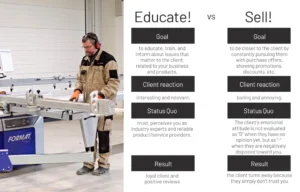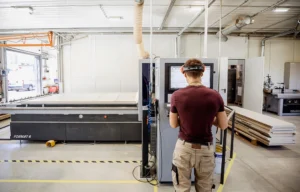It is natural that the goal of any business is to sell a product or service. Every company aims to generate profit — and profit is impossible without sales. However, businesses and their sales managers often make the mistake of focusing too narrowly on a single action: the sale itself. It’s one thing to sell a product using an aggressive digital marketing strategy — tracking customer behavior online through Google Ads, display banners, or retargeting. But it’s something entirely different to build a consistent business strategy based on customer experience analysis and education.
Before making a purchase, a customer goes through various stages of the customer journey. Sales funnel specialists have divided each step of this journey into distinct stages to understand where the potential customer currently stands and what kind of activation is needed. To better understand the sequence of actions, let’s look at what a customer experiences before they buy your product or service.
Consistency of Actions and the Importance of Education
Today, in an era of information overload, being recognized in the market is harder than ever. That’s why measured advertising and sales activities play a crucial role in the success of any business. Whether you choose traditional advertising channels (TV, radio, billboards) or digital platforms (Facebook ads, digital marketing, e-marketing, email marketing, or other social media), success often depends not on the amount spent on advertising, but on the strategic and thoughtful delivery of a message that identifies and addresses your target audience’s problems.
Consistent communication that addresses real and relevant issues engages the audience without overwhelming them, and builds a sense of trust. Quality and pricing indicators mean little until the customer actually tries the product — which is why education, the fulfillment of core needs, and a clearly communicated value proposition are key to sparking interest before a sale even takes place.

Stages of Getting to Know a Product
It is said that to truly understand a brand’s character, you should imagine it as a living person. Just like with people, it takes time to get to know a product and truly understand it. This is a process where any misstep can instinctively lead to a loss of attention. Imagine it like getting to know a neighbor — just knowing that they exist doesn’t mean you’ll automatically start engaging with them. There needs to be some kind of shared activity or topic that personally resonates with you.
There are various frameworks for understanding how customers become familiar with a product, but here are the essential stages that every consumer typically goes through on their way to becoming a customer.

Awareness. To be noticed, you must announce your presence in the market. Today, various advertising tools are used selectively according to the chosen marketing strategy to spread information. Becoming aware of a product or service is the first step, so it’s crucial that the message is delivered clearly and effectively.
Interest. During the product discovery stage, the potential customer identifies and understands the benefit that could help solve a problem they’re facing. In this phase, the product’s appeal is based not only on its price or purchasing conditions but also on how precisely it meets a specific customer need.
Trust / Decision. The consideration stage is one of the most important. If a customer, after becoming familiar with the product and its features, decides not to purchase it or chooses a competitor instead, it likely means the communication was not fully effective. Trust in the company and its product can be a deciding factor — this trust can be built by communicating company values, expertise, experience, and understanding of what matters to the customer.
Purchase. Ensure a smooth purchasing process for your product or service. The shorter and simpler the sales procedure is for the customer, the better your chances of creating a positive experience — and, naturally, receiving good feedback and repeat business.
Post-Purchase. Your existing customers — your target audience — are the main reason your business operates. In some ways, working with them is the easiest part, since they already know you and your product. However, maintaining that relationship and communicating in a timely manner is essential to encouraging loyalty. It’s important that your clients not only remember you but are also willing to share their positive experience with others.
So, if your goal is to build a long-term, sustainable business, reconsider your values and communication strategy, and choose the more thoughtful but results-driven path of customer education. Remember: chasing quick profits is short-lived — in the end, it’s not price or “exclusive offers” that determine success, but meaningful engagement.